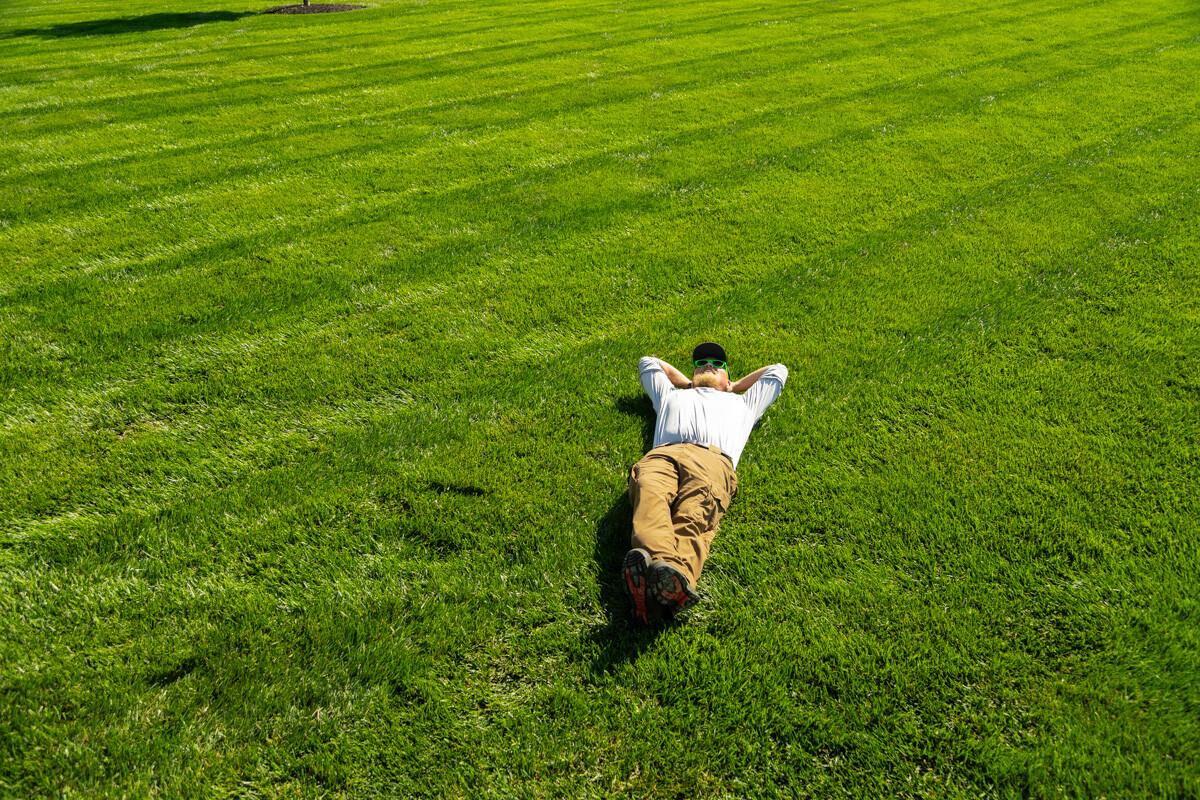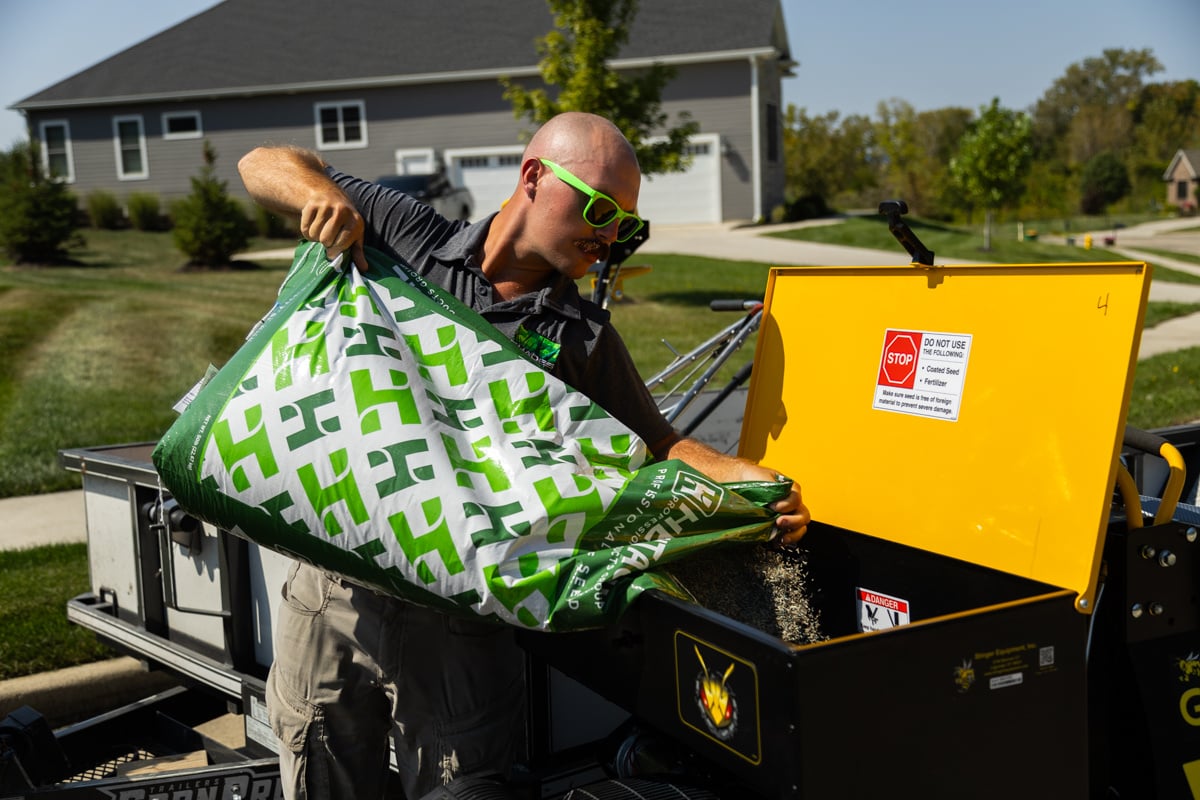

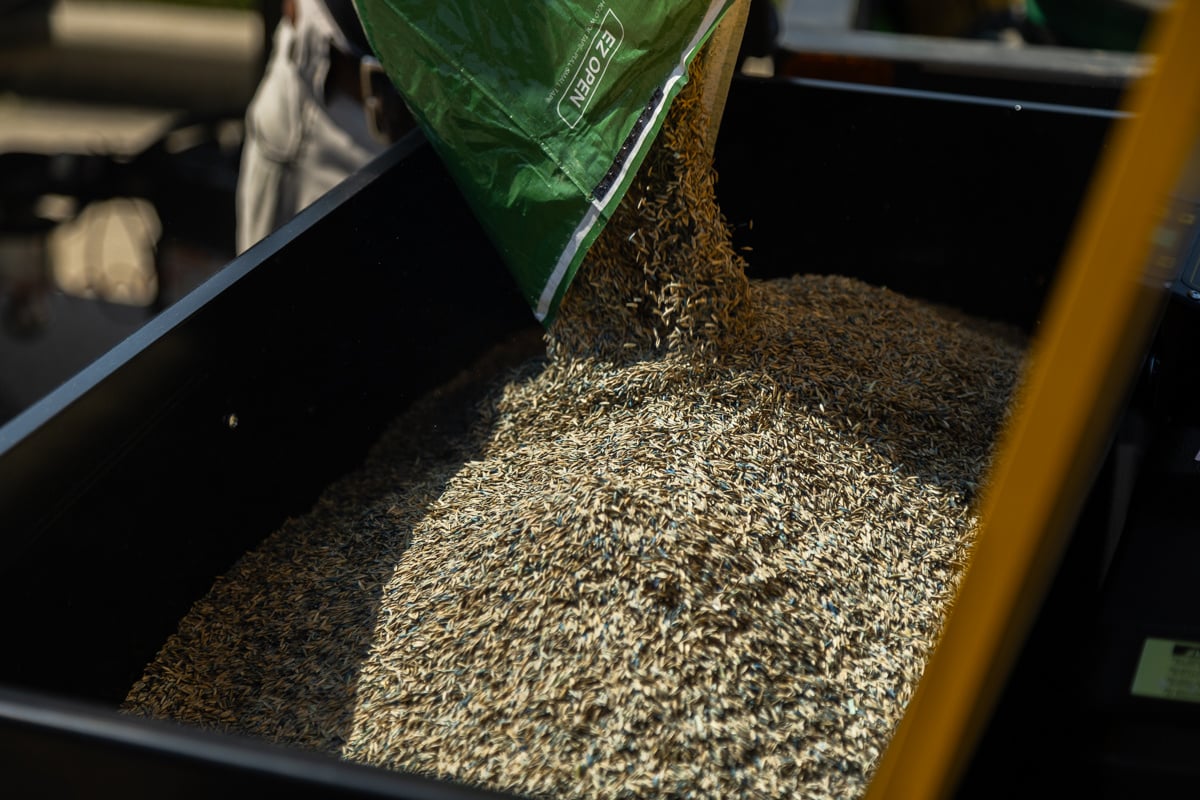
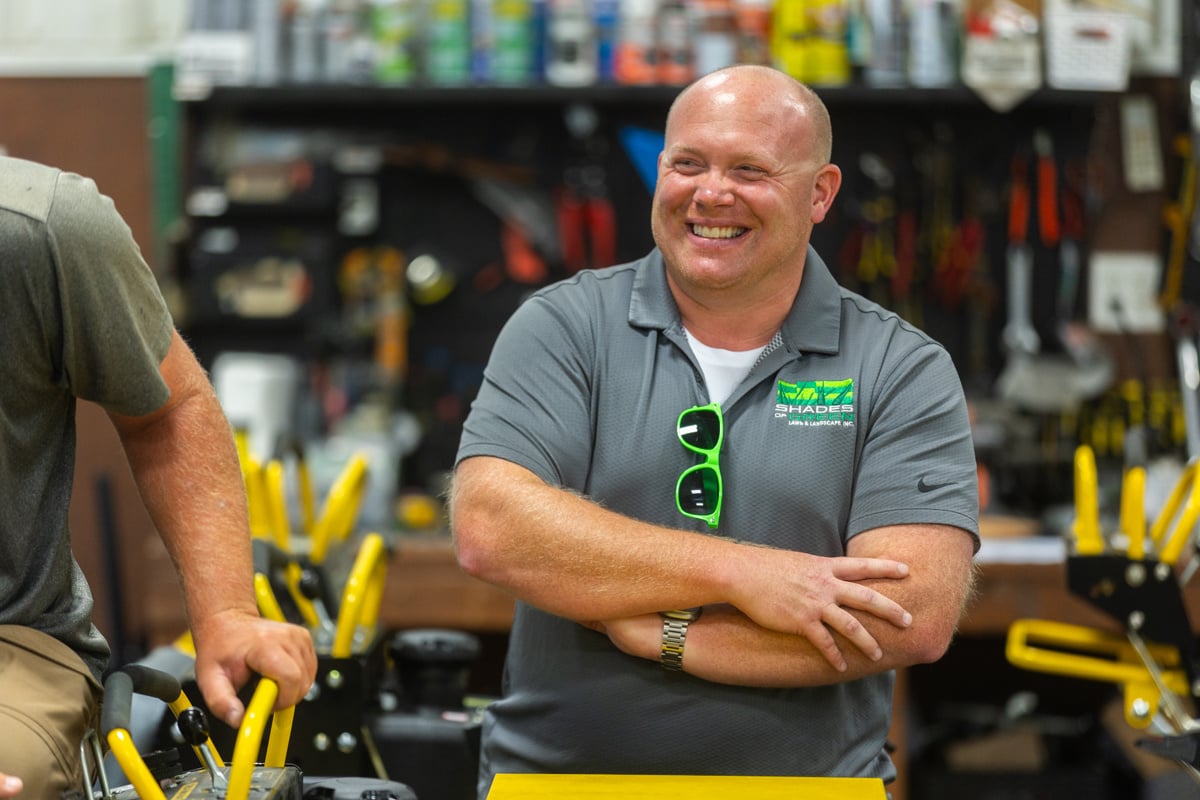
So, your lawn is looking a little bit rough. Thin, patchy, and just not that thick, soft grass you have been dreaming of. It’s time to toss down some grass seed and wait for the magic to happen, right?
Overseeding is not technically difficult; however, doing it right takes more than a quick trip to the garden center. The timing, seed selection, and aftercare all play a huge role in whether your new grass thrives or fizzles out.
Let’s explore everything you need to know about overseeding, including what it is, why it works, and the best time to seed.
Overseeding is simply the process of spreading new grass seed directly over your existing lawn. It is a straightforward, science-backed method to help fill in thin areas, improve the overall thickness of your turf, and introduce new, more resilient grass varieties into your lawn.
The idea behind overseeding is simple: even a healthy lawn gets tired. Grass doesn’t stay a young, healthy plant forever, and over time, all lawns can become thin, patchy, and prone to diseases and weeds.
Overseeding is commonly paired with core aeration for a good reason. Aeration removes small plugs of soil from the lawn, creating pockets where seeds can settle in and make direct contact with the soil, which is crucial for seed germination. Aeration also reduces soil compaction, making it easier for roots to grow deeper and stronger.
A thick lawn not only looks better, but it also naturally crowds out weeds, holds moisture better, and resists disease more effectively.
Not sure if your lawn needs overseeding? Here are a few signs to look for:
 If you’re noticing any of these symptoms, overseeding could be the boost your lawn needs. When it is done with the right seed, at the right time of year, the results can be dramatic.
If you’re noticing any of these symptoms, overseeding could be the boost your lawn needs. When it is done with the right seed, at the right time of year, the results can be dramatic.
Timing is everything when it comes to overseeding. In Indiana, you technically have two windows to get it done: overseed in spring or fall. But if you are aiming for the best results with the least amount of stress (for both you and your lawn), there is one clear winner: late summer to early fall, specifically between August 15 and September 15.
Why is this the best window? Because typically, conditions are ideal. The soil is still warm from the summer, and the air is starting to cool, which is a dream combination for cool-season grasses like Turf Type Tall Fescue.
We know overseeding in the spring can be tempting, and that you want your lawn to look great right away. Unfortunately, spring weather in Indiana is unpredictable. It can also be really difficult to balance weed control with new seedlings.
The seed you choose plays an enormous role in how successful your overseeding efforts will be. At Shades of Green, we handcraft our own premium seed mixtures, made up of top-performing cultivars that we know will thrive in Indiana’s unique climate.
Why does that matter? Many of the seeds you can buy at big-box stores are filled with, well, filler that just doesn’t perform well. Carefully chosen seed cultivars mean you will have better color, germination, and disease resistance.
For most Indiana lawns, the best grass seed for overseeding is Turf Type Tall Fescue. It is a tough, drought-tolerant bunch grass with a deep root system and soft, lush look. However, because it is a bunch-type grass, that means it does not spread on its own, and you will need to overseed regularly to help keep it thick.
If you are wondering does overseeding work, the short answer is absolutely yes, when done right. Overseeding is one of the most effective ways to revitalize a tired lawn. However, like anything in lawn care, the results depend heavily on the method, materials, and timing.
There’s no shortage of DIY overseeding guidelines online, and while it is possible to get decent results on your own, there are a few common roadblocks homeowners run into. First, is seed quality. Since a hardware store-bought seed includes lots of filler and even sometimes older varieties that don’t perform well in our Midwest climate, your results will likely fall short no matter how effectively you spread it.

Once you’ve overseeded your lawn, your next job is just as important as getting the seed down: watering. New grass seed is delicate, and the way you water it in the first few weeks will make or break your results.
If the ground is extremely dry or compacted before you overseed, your results will suffer. About a week before your lawn is scheduled for service, we recommend deep watering the lawn a few times. This softens up the soil and allows for deeper and more effective aeration.
For the first 7-10 days, your goal is to keep the soil consistently damp 24/7. That doesn’t mean flooding the lawn, though. Ideally, we recommend watering 3 to 4 times a day, especially if the weather is hotter. You don’t want puddles or runoff, but you don’t want the seed drying out either.
Once germination starts, you can start to taper back the frequency of watering and increase how long you water. Think fewer watering cycles per day, but a bit deeper each time. This encourages the young roots to start growing downward instead of staying shallow.
On cooler days or cloudy days, you may be able to cut back on the afternoon watering, especially if the lawn feels soft and damp to the touch. But if it is still hot and sunny, keep those shorter bursts going.
At Shades of Green, overseeding isn’t a one-size-fits-all service. It is a carefully planned process that factors in your lawn’s condition, irrigation system, mowing habits, and the weather forecast.
One of the biggest risks of DIY seeding is losing everything to disease or heat stress. When grass seedlings are kept too wet in hot weather, it creates the perfect environment for pathogens to thrive. We’ve seen entire lawns wiped out by summer seeding attempts that didn’t account for Indiana’s unpredictable humidity or the risk of turf disease.
 Working with a pro means you are not guessing and you are getting:
Working with a pro means you are not guessing and you are getting:
Overseeding might seem simple on the surface, but doing it well takes the right timing, the right seed, and the right care afterward. From watering schedules to mowing height, each detail plays a role in helping your lawn thrive.
When it is done right, overseeding can completely change the look, feel, and health of your lawn. And when it is done with the help of a trusted team, you will get results without all the stress.
If you are ready to give your lawn the boost it needs, our team at Shades of Green is here to help. We offer a proven, locally customized approach to overseeding that takes the guesswork out and delivers lasting results.
Ready for the lush lawn of your dreams? Get started today by filling out our contact form.
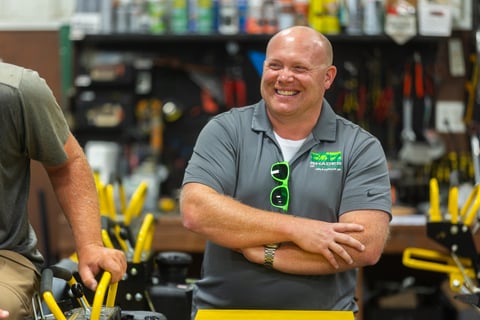
Cory is the heart and soul of Shades of Green. His dedication to doing right for our customers has been the driving force behind the company's success. With a degree in Turf Science from Purdue University, Cory continually strives to craft the best treatment plans using the latest technologies and innovative products, ensuring top-notch results for every client.




